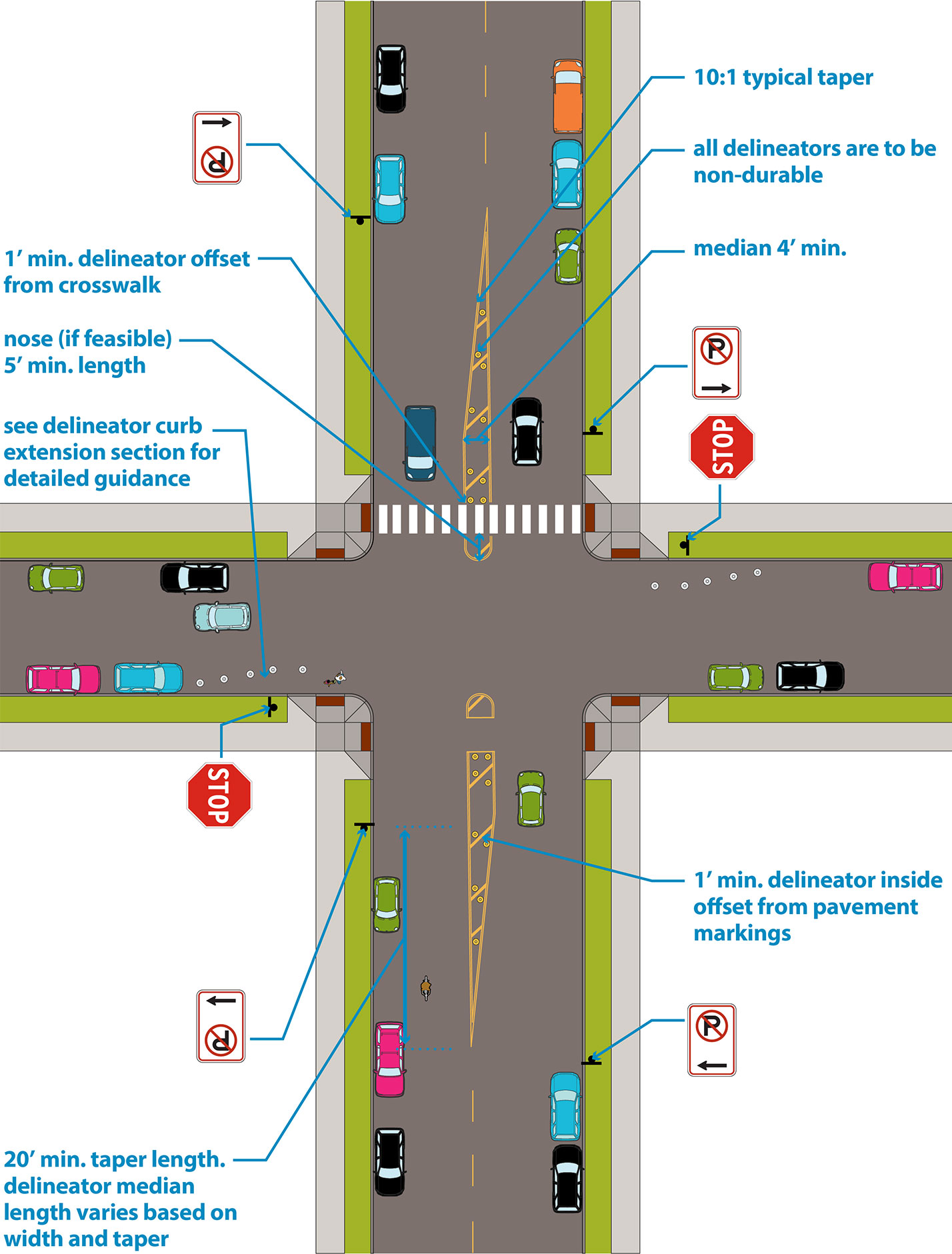Delineator medians
Search Content
Download PDF
Print Guide
Introduction
Delineator medians utilize plastic delineators or “bollards” to protect pedestrians and bicyclists from moving traffic. Delineator medians allow pedestrians and bicyclists to navigate one direction of traffic at a time when crossing.
Delineator medians provide the following benefits:
- Create shorter crossing distances for people walking and rolling across the street.
- Allow people walking and rolling to cross one direction of traffic at a time.
- Help slow down vehicle speeds by making drivers navigate a vertical element in the street
Figure 3.7H.2:
Delineator medians
Design Considerations
|
Location |
|
|
Bollard type |
A non-durable yellow style delineator is to be used. |
|
Nose |
When feasible, delineator medians should include a striped nose that extends beyond the crosswalk/pedestrian clear zone.
|
|
Delineator placement and spacing |
|
|
Width |
Delineator medians are to be at least 4’ in width, measured from the medians widest point. |
|
Length |
|
|
Taper |
A minimum taper of 10:1 (10’ of length for every 1’ of width adjustment) is required for delineator medians.
|
|
Signage and Striping |
|
|
Incuding other crossing improvements |
Delineator medians are to be implemented with marked crosswalks and bikeway crossing markings as appropriate. Designers are also to consider advanced stop bars, permanent curbs extensions, delineator curb extensions, and rectangular flashing beacons (RRFBs) in conjunction with the delineator median. |
|
Installation considerations |
Delineators are to be bolted to the pavement per manufacturer specifications. If used on a bridge deck, the delineators are to be adhered with butyl pads. |
|
Maintenance considerations |
|



